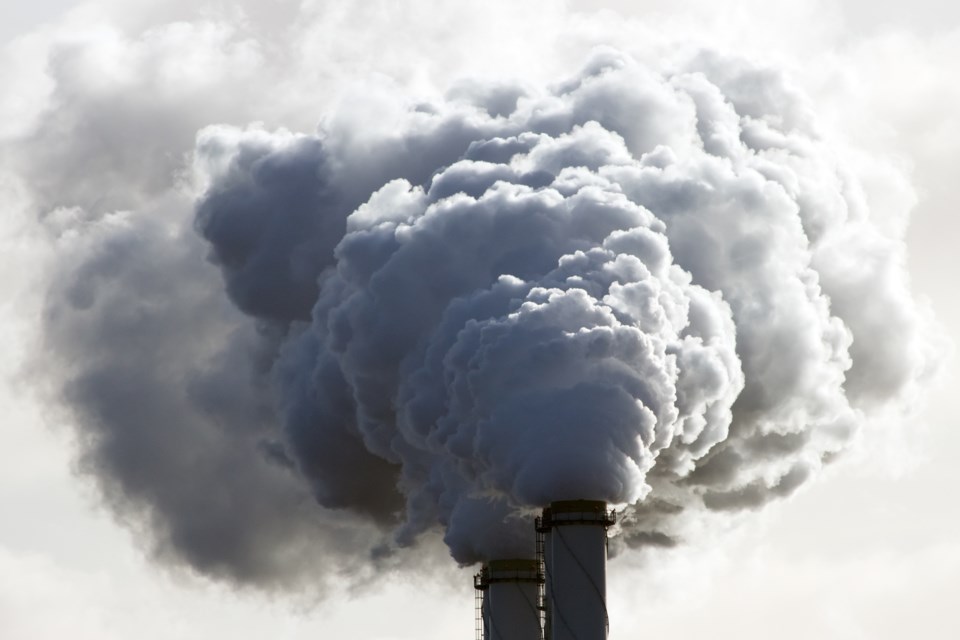Longmont drivers could see higher gas prices a year from now and more regulations clamped on certain industries now that the Environmental Protection Agency has reclassified Denver and the northern Front Range as “severe” violators of federal air quality standards.
The EPA announced its decision on Friday to change the Denver North Front Range area from “serious” to “severe” for ground-level ozone/smog. The agency’s decision was not a surprise and state environmental officials said they were prepared to deal with the consequences of the downgrade, according to the Denver Post. State officials said they are developing a strategy to remove the northern Front Range from the EPA’s list of places where poor air quality jeopardizes health and contributes to climate change, the Post states.
“We all feel a sense of urgency,” Trisha Oeth, director of environmental health and protection for the Colorado Department of Health and Environment, told the Post. “The trend has been toward getting cleaner. We just need to keep working on it.”
Jane Turner, Longmont’s air quality coordinator, said via email Monday that the city is “very concerned about ozone levels,” and is hopeful that the EPA’s reclassification of Front Range nonattainment will lead to improvements in the city’s local air quality.
The most notable impacts of reclassification for all residents living in the Front Range non-attainment area will be at the pump, Turner said.
“Local gas stations would begin selling cleaner-burning gasoline during summer months, beginning one year after the reclassification becomes effective,” Turner said. “Studies have shown that cleaner-burning gasoline significantly improves air quality; it also tends to be more expensive.”
The reclassification would also result in stricter regulations on industries deemed to be major sources of ozone-forming pollution, Turner said. The regulations require monitoring and minimizing emissions and currently apply to large industrial facilities, such as asphalt plants.
A reclassification would mean the regulations would apply to additional industrial facilities, which would further decrease the ozone-forming pollutants being produced each year, Turner said.
The Colorado Department of Public Health and the Environment (CDPHE) determines which industrial facilities will be impacted by the stricter regulations based on the amount of pollutants emitted annually. That means CDPHE will determine if there are any specific businesses in Longmont that would be subject to the new regulations, she said.
Because ozone is a regional pollutant, and when ozone is at unhealthy levels in Denver, it will also be high in Longmont, Turner said. “This is why the EPA’s designation applies to nine counties along the Front Range,” she said. “The city of Longmont is doing its part to decrease the release of ozone-forming pollutants within the city. Lowering the ozone levels along the Front Range will require a regional effort.”
The city has used regulations and innovative legal agreements to stop oil and gas development with the city, she said. The last active oil and gas well pad located in the city was closed in July 2021.
Longmont also funds its own research-grade air quality program and shares the data freely with scientists and regulators, Turner said. The data has helped to shine a light on local air quality impacts and is improving scientific understanding of how ozone forms in the area. Data are viewable to the public here: https://www.bouldair.com/longmont.htm
In addition, Longmont continues to invest in making transit, bicycling, and walking easier and more convenient by converting street space to be more efficient for all modes - including adding bicycle facilities to Ninth Avenue, Mountain View Avenue, Pike Road, Turner said.
The city is enhancing its system of greenways and making more connections for active modes — including the Spring Gulch Greenway extension to Union Reservoir with an underpass at County Line Rd — and designing for future construction of the Coffman Street Busway/Bikeway as a way to create separate spaces for buses, bicycles, and pedestrians to and through downtown, she said.
The city’s Sustainability Plan and Climate Action Recommendations Report identified strategies to reduce greenhouse gas emissions from the transportation sector, which in turn reduce ozone precursors. Some of these activities include transitioning the city’s fleet to electric or other alternative fuel vehicles and adopting building codes that require new homes be EV-ready, Turner said.



